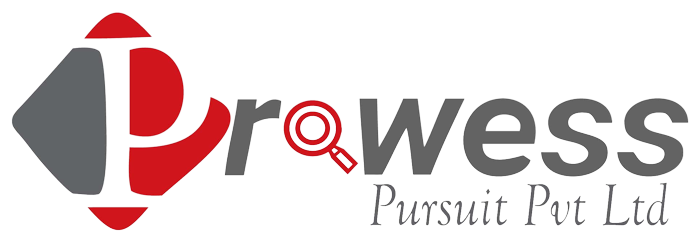
Australia Work Visa – Meaning, Requirements, Process Time, and Fees
Dreaming of working Down Under? Australia’s thriving economy and beautiful landscapes make it a top destination for skilled professionals. If you have the expertise Australia seeks, an Australian Work Visa might be your ticket to a new life. This blog will be your one-stop guide to understanding these visas. We’ll explore the different types, eligibility requirements, processing times, and associated fees. So, buckle up and get ready to unlock the potential of working in Australia!
What is Australia Work Visa?
An Australia work visa unlocks the door to exciting possibilities for Indian citizens aiming to launch their careers overseas. It’s more than just permission to work; it’s a chance to immerse yourself in Australia’s dynamic work culture and vibrant lifestyle. Australia’s booming economy presents a treasure trove of work opportunities for Indian professionals across various sectors. This guide delves into the nitty-gritty of securing an Australian work visa, including the requirements, application process, and associated costs. With this roadmap in hand, you’ll be well-equipped to navigate your path towards a thriving professional journey in Australia.
Australia Work Visa Types: Unveiling the Pathway to Your Dream Job Down Under
Australia, with its stunning landscapes, thriving economy, and multicultural society, beckons skilled professionals from across the globe. If you possess the talent and ambition to work in Australia, understanding the diverse work visa options is crucial. This guide delves into the most popular Australian work visas, equipping you with the knowledge to navigate your path to success.
1. Global Talent Visa (Subclass 858):
This prestigious visa streamlines the permanent residency process for exceptionally talented individuals in high-demand fields. It boasts two pathways:
- Expression of Interest (EOI): Submit an EOI showcasing your skills and achievements in a field on the Global Talent Visa Occupation List. If successful, you’ll be invited to apply for the visa.
Key Points:
- Permanent residency visa.
- Ideal for highly skilled individuals in targeted occupations.
- Two pathways available: EOI and Nomination by an endorsed organisation.
2. Employer Nomination Scheme Visa (Subclass 186):
This permanent visa requires sponsorship from an Australian employer. It offers three streams:
- Direct Entry Stream: Your employer nominates you based on your skills and their specific needs.
- Labour Agreement Stream: Applies if your employer has a pre-existing labour agreement with the government.
- Temporary Residence Transition Stream: For those transitioning from a temporary sponsored visa to permanent residency.
Key Points:
- Permanent residency visa.
- Sponsorship from an Australian employer is mandatory.
- Three streams cater to different sponsorship scenarios.
3. Permanent Skilled Regional Visa (Subclass 191):
Introduced in November 2022, this permanent visa targets skilled workers willing to live and work in designated regional areas. However, it requires holding a previous valid visa to be eligible.
Key Points:
- Permanent residency visa.
- Requires a previous valid visa for eligibility.
- Focuses on attracting skilled workers to regional areas.
4. Regional Sponsored Migration Visa (Subclass 187):
This permanent visa is ideal if you’ve previously held a temporary work visa and worked for the same employer in a regional area.
Key Points:
- Permanent residency visa.
- Requires a previous sponsored work visa and regional work experience.
5. Skilled Employer Sponsored Regional Visa (Subclass 494):
This temporary visa (valid for five years) allows you to work in regional areas for a sponsoring employer. After three years, you may be eligible to apply for permanent residency.
Key Points:
- Temporary visa (five years).
- Sponsorship from a regional employer is required.
- Pathway to permanent residency after three years (subject to eligibility).
6. Skilled Independent Visa (Subclass 189):
This points-based visa assesses your skills, qualifications, and work experience. You’ll need a minimum of 65 points to be eligible for an invitation to apply. If successful, you can live and work in Australia indefinitely.
Key Points:
- Permanent residency visa.
- Points-based assessment system.
- Offers the flexibility to live and work anywhere in Australia.
7. Skilled Nominated Visa (Subclass 190):
Similar to the Skilled Independent visa, this permanent visa is points-based. However, it requires an invitation from a state or territory government to apply.
Key Points:
- Permanent residency visa.
- Points-based assessment and invitation system.
- Specific state or territory sponsorship involved.
8. Skilled Recognized Graduate Visa (Subclass 476):
This temporary visa (valid for 18 months) caters to recent graduates from Australian universities with skills in high demand.
Key Points:
- Temporary visa (18 months).
- Ideal for recent graduates with in-demand skills.
9. Skilled Work Regional Visa (Subclass 491):
This visa targets highly skilled and qualified individuals willing to work in designated regional areas. It requires meeting specific points criteria and submitting an EOI. After three years, you can apply for permanent residency.
Key Points:
- Temporary visa with a pathway to permanent residency.
- Points-based and EOI system.
- Focuses on attracting skilled workers to regional areas.
10. Temporary Activity Visa (Subclass 408):
This visa was introduced during the pandemic to assist visitors with expiring visas affected by travel restrictions. It may not be readily available anymore, so check the latest updates from the Department of Home Affairs.
11. Temporary Graduate Visa (Subclass 485):
This temporary visa (valid for two to four years) offers two streams: Graduate Work and Post-Study Work. The Graduate Work stream requires your occupation to be on the Skilled Occupation List.
Australia Work Visa Requirements: Your Gateway to Down Under
Understanding the Australian work visa requirements is your first crucial step.
Meeting the Benchmark: Essential Criteria
The Australian government meticulously assesses work visa applicants to ensure they possess the qualifications and skills to contribute meaningfully to the nation’s workforce. Here’s a breakdown of the key requirements:
- Age: Most work visa categories have a minimum age limit of 18. There’s generally no upper age restriction, but some occupations might have specific age requirements based on skills or experience.
- Education and Experience: The specific educational qualifications and professional experience you need depend on the work visa category you’re applying for. Certain professions might require skill assessments or registrations before you can even lodge a visa application. It’s vital to research the precise demands for your chosen field.
- English Language Proficiency: Demonstrating your English language fluency is paramount for most work visa applications. The most common way to do this is by taking and passing an approved test like the IELTS (International English Language Testing System). However, there might be exceptions or alternative ways to prove your language skills in specific situations.
- Health and Character Checks: All work visa applicants must meet health standards. This might involve a medical examination or a health declaration, depending on the visa type and the length of your intended stay. Additionally, you’ll need to pass character requirements, usually by providing police clearance certificates or similar documents from countries you’ve resided in for a specific period.
- Sponsorship or Nomination: Some work visa categories necessitate sponsorship or nomination by an approved employer, state/territory government, or regional authority. The sponsor or nominating body must fulfill specific criteria and obligations set by the Australian government.
- Financial Ability: Certain work visas might require proof of sufficient funds to support yourself and any accompanying family members during your time in Australia. The financial requirements vary based on the visa category and the number of dependents you have.
Remember: These are general pointers. Each work visa category has its own unique set of requirements. To ensure a smooth application process, it’s highly recommended that you consult the official Australian government websites (https://immi.homeaffairs.gov.au/) or seek professional advice from a registered migration agent. They can help you decipher the specific requirements applicable to your individual circumstances and guide you through the application process.
How to Apply for a Work Visa in Australia: A Comprehensive Guide
This guide will walk you through the application process step-by-step, ensuring a smooth and informed journey.
Step 1: Finding Your Visa Fit
Australia boasts a diverse range of work visas, each catering to specific circumstances. Here’s a breakdown of some popular options:
- Employer Nomination Scheme (ENS) Visa: Sponsored by your Australian employer, this visa allows you to work for a nominated position.
- Temporary Skill Shortage (TSS) Visa: Ideal if your occupation is on Australia’s Skilled Occupation List (SOL), indicating a demand for your skills.
- Regional Sponsored Migration Scheme (RSMS) Visa: Encourages skilled workers to settle in regional areas of Australia, offering potential pathways to permanent residency.
To pinpoint the perfect visa for you, delve into the Australian Department of Home Affairs website (https://www.homeaffairs.gov.au/). There you’ll find a user-friendly visa finder tool and detailed information on each visa category.
Step 2: Documenting Your Journey
Once you’ve identified your ideal visa, it’s time to gather the necessary documents. This typically includes:
- Valid Passport: Ensure your passport has ample validity (usually six months beyond your intended stay) and sufficient blank pages for visa issuance.
- Educational Credentials: Certified copies of your academic certificates, diplomas, or degrees are often required.
- Work Experience Proof: Documents like employment certificates or payslips verifying your relevant work experience.
- English Language Test Results (if needed): Depending on your visa category, proof of English language proficiency through tests like IELTS or PTE may be necessary.
- Skills Assessment (if applicable): Some professions require a skills assessment from an accredited assessing authority to verify your qualifications meet Australian standards.
- Health and Character Certificates: These certificates might be requested to demonstrate your good health and character.
- Proof of Financial Capacity: Depending on the visa, you might need to showcase sufficient funds to support yourself in Australia.
Step 3: Establishing Your ImmiAccount
The Australian Department of Home Affairs utilizes an online portal called ImmiAccount (https://immi.homeaffairs.gov.au/help-support/applying-online-or-on-paper/online) for visa applications. This is where you’ll manage your entire application process. Creating an ImmiAccount is a straightforward process – simply follow the on-screen instructions and remember to choose a secure password.
Step 4: Filling Out the Application Form
Log in to your ImmiAccount and select the specific work visa you’re applying for. The online application form will require you to provide details like your personal information, employment history, and travel plans. Be meticulous and ensure all information is accurate and up-to-date. Double-check everything thoroughly before proceeding.
Step 5: Attaching Your Supporting Documents
This is where your document collection comes into play. Upload all required documents electronically through your ImmiAccount. Ensure each document adheres to the specified format and size requirements. It’s helpful to organize your documents logically for easy review by the processing officers.
Step 6: Taking Care of the Fees
The next step involves paying the visa application fee. The fee amount varies depending on the visa category. You can pay online using a valid credit or debit card. Keep a copy of your payment receipt for future reference.
Step 7: Submitting Your Application
Once you’ve meticulously reviewed your application and attached documents, it’s time to submit it electronically. You’ll receive an acknowledgment email confirming receipt of your application.
Step 8: Monitoring and Responding
After submitting your application, it’s crucial to stay vigilant. Regularly check your ImmiAccount for any updates or requests from the Department of Home Affairs. They might require additional information or documents to complete the assessment process. Promptly respond to any communication to avoid delays in processing your application.
Step 9: The Waiting Game – Awaiting the Decision
The processing time for work visa applications can vary. Factors like the visa category, complexity of your application, and current workload of the department can all influence the timeframe. It’s best to avoid making any travel arrangements until you receive a definitive decision on your application.
Step 10: The Moment of Truth – Visa Decision
Once a decision has been made on your application, you’ll be notified through your ImmiAccount. Receiving a “granted” message signifies your visa application’s success! However, if your application is unsuccessful, you’ll receive a refusal
Australia Work Visa Fees in Indian Rupees (INR)
Below is a comprehensive table detailing the visa application fees for various work visa categories in Australia, accompanied by their corresponding amounts in Indian rupees (INR). This resource aims to assist individuals in planning and understanding the financial aspects associated with visa applications.
| Work Visa Category | Visa Application Fee (AUD) | Visa Application Fee (INR) |
| Temporary Skill Shortage Visa (Subclass 482) | $1,265 | ₹70,580 |
| Employer Nomination Scheme (Subclass 186) | $4,045 | ₹2,25,692 |
| Skilled Independent Visa (Subclass 189) | $4,045 | ₹2,25,692 |
| Temporary Work (Short Stay) Visa (Subclass 400) | $280 | ₹15,623 |
| Global Talent Visa (Subclass 850) | $4,110 | ₹2,29,318 |
Important Note:
- The visa application fees are subject to change and may fluctuate based on the current exchange rate.
- To ensure you have the most up-to-date and accurate information, it’s highly recommended to visit the official website of the Australian Department of Home Affairs: https://www.homeaffairs.gov.au/.
Beyond the Application Fee: Additional Costs to Consider
While the visa application fee is a significant factor, obtaining a work visa in Australia involves additional expenses. Here’s a breakdown of some key cost considerations:
- Health Insurance: Securing adequate health insurance coverage is mandatory for most work visas. The cost of health insurance varies depending on your age, health condition, and the specific coverage you choose. Researching different providers and comparing plans is crucial to find one that fits your needs and budget.
- Relocation Expenses: Relocating to Australia involves expenses like transportation costs (flights, shipping), temporary accommodation, and potentially visa application assistance. Planning and budgeting for these relocation expenses will ensure a smooth transition.
- Accommodation: Renting an apartment or house can vary significantly depending on the city or region. Major cities like Sydney and Melbourne generally have higher rental costs compared to regional areas. Researching the rental market in your desired location will help you estimate your accommodation expenses.
- Transportation: Consider the cost of commuting to work and exploring Australia. Public transportation options like trains, buses, and trams are available in most cities. Budgeting for a car purchase (if needed), registration fees, insurance, and fuel is essential if you plan to drive.
- Living Expenses: Day-to-day expenses like groceries, utilities, dining out, and entertainment should be factored in. The cost of living varies depending on your lifestyle choices and the city you reside in. Researching everyday item prices will help you create a realistic budget based on your financial situation.
Planning for a Smooth Transition:
Remember, the costs mentioned above are in addition to the visa application fee. Careful financial planning that considers all these factors is crucial when calculating the overall cost of obtaining a working visa in Australia. By creating a comprehensive budget and being prepared for these additional expenses, you can ensure a smooth transition and maximize your work experience in Australia.
Additional Tips:
- Explore scholarship and grant opportunities that can help offset some of the costs associated with obtaining a work visa and relocating to Australia.
- Research potential employers in Australia who may offer sponsorship or relocation assistance programs.
- Consider starting with a temporary work visa to test the waters and assess the cost of living before committing to a long-term move.
By following these tips and having a clear understanding of the financial aspects involved, you can make an informed decision about pursuing a work visa and embarking on your exciting Australian adventure.
Australia Work Visa Processing Time and Visa Decision
So you’ve taken the exciting step of applying for an Australian work visa! Now comes the waiting game, and it’s natural to be curious about how long it will take to hear back. Unfortunately, there’s no one-size-fits-all answer when it comes to processing times. However, we can delve into the factors that influence them and what to expect during the decision process.
The Waiting Game: Processing Time Breakdown
The processing timeframe for your Australian work visa application can vary significantly, ranging from a few weeks to several months. This variation depends on a few key factors:
- Visa Category: Different work visa subclasses have varying processing timelines. Popular options like the Temporary Skill Shortage (TSS) visa (subclass 482) generally have faster processing speeds compared to more complex categories requiring sponsorship, like the Employer Nomination Scheme (ENS) visa (subclass 186).
- Application Completeness: A complete and error-free application with all supporting documentation gets processed faster. Incomplete applications might lead to delays or requests for additional information, extending the waiting period.
- Workload and Demand: The Department of Home Affairs (DHA) experiences fluctuating workloads. During peak application periods, processing times may be longer.
- Security Checks: Background checks and health assessments can add to the processing time, depending on your nationality and circumstances.
- Skill Assessments: Specific occupations might require skills assessments from designated authorities. These assessments can have their own processing times that contribute to the overall wait.
Understanding the Visa Decision
Once the DHA has completed processing your application, you’ll receive their decision. Here are the possible outcomes:
- Visa Granted: Congratulations! You’ve been approved to work in Australia under the specific visa subclass you applied for.
- Request for Further Information (RFI): The DHA might require additional documents or clarification on certain aspects of your application before making a final decision. Responding promptly to an RFI can help expedite the process.
- Visa Refusal: Unfortunately, your application might be refused. The DHA will provide reasons for the refusal, and you may have the right to appeal the decision depending on the specific circumstances.
Staying Informed Throughout the Process
While waiting for a decision, it’s crucial to stay informed. Here are some tips:
- Online Application Portal: Regularly check your ImmiAccount for any updates, requests, or messages from the DHA.
- Email Communication: Ensure you provide a valid and frequently accessed email address. The DHA will communicate important updates via email.
- Official Websites: The Department of Home Affairs website (https://immi.homeaffairs.gov.au/) provides the latest information on processing times for different visa categories.
Remember: The information provided here offers a general overview. For the most accurate and up-to-date details on processing times and visa decisions for your specific situation, it’s highly recommended to consult the official government websites or consider seeking guidance from a registered migration agent.
After Receiving Your Australian Work Visa
Congratulations on receiving your Australian work visa! Now that you’ve embarked on this exciting journey, it’s time to understand the rights, responsibilities, and practical steps to take after landing in Australia.
Here’s a comprehensive guide to help you navigate your post-visa arrival:
Understanding Your Visa Conditions
- Visa Grant Letter: This document outlines the specific visa subclass you hold (e.g., Temporary Skill Shortage visa (Subclass 482)). It details permitted work activities, any limitations on working hours (full-time, part-time), and potential regional restrictions (e.g., working only in designated regional areas). Refer to this document frequently to ensure compliance.
- Visa Conditions Table: This table within the grant letter clearly outlines key points like:
- Occupations you can perform: This specifies the exact job titles or industry sectors you’re authorized to work in.
- Sponsorship requirements (if applicable): Some visas require sponsorship from an Australian employer. Understand your sponsorship obligations and maintain a good working relationship with your sponsor.
- Travel restrictions: Certain visas may have limitations on travel outside Australia while the visa is valid.
Understanding Your Rights and Protections
As a work visa holder, you’re entitled to fair treatment and basic workplace rights in Australia. Here are some key areas to be aware of:
- Fair Work Ombudsman: This government agency enforces minimum workplace standards, including:
- Minimum wages
- Entitlement to breaks and leave (annual leave, sick leave, etc.)
- Termination rights and unfair dismissal procedures
- Safe Work Australia: This agency promotes workplace health and safety. You have the right to a safe work environment free from risks.
Accessing Healthcare
Australia boasts a robust healthcare system. Here’s how to navigate it:
- Medicare: Australia’s public healthcare system provides subsidized medical services. However, eligibility depends on your visa subclass and home country. Check with the Department of Health and Aged Care for details.
- Private Health Insurance: While not mandatory, private health insurance offers broader coverage and faster access to specialists. Explore plans offered by different private health insurers.
Taxation and Tax File Number (TFN)
- Tax File Number (TFN): This unique identifier is essential for working and paying taxes in Australia. You can apply for a TFN from the Australian Taxation Office (ATO) upon arrival.
- Tax obligations: Familiarize yourself with Australian tax laws. You’ll need to lodge tax returns annually, reporting your income and paying any applicable taxes. The ATO website offers clear guidelines and resources.
Banking and Financial Matters
- Opening a Bank Account: Having a local bank account simplifies receiving your salary and managing finances. Research different banks and their services to find a suitable option. Be prepared to provide necessary identification documents when opening your account.
Settling into Australia
Australia offers a welcoming and multicultural environment. Here are some tips to settle in smoothly:
- Culture and Customs: Learn about Australian customs, social etiquette, and slang to bridge the cultural gap.
- Community and Support Networks: Connect with local communities, attend orientation programs, or join online forums for expats. Building a support network can ease your transition.
Seeking Employment (if applicable)
If you haven’t secured a job beforehand, explore opportunities once you arrive:
- Job Boards: Utilize online job portals like Seek or Indeed to find relevant positions.
- Networking: Attend industry events and connect with professionals in your field.
- Recruitment Agencies: These agencies can connect you with potential employers.
Remember: Always adhere to the work conditions specified in your visa. Ensure potential employers are aware of your visa status and any limitations it may have.
By following these guidelines, you can ensure a smooth transition into your new life and career in Australia. Welcome aboard!
Frequently Asked Questions
How can I get a work visa for Australia?
To obtain a work visa for Australia, you typically need to secure a job offer from an Australian employer who is willing to sponsor you. The specific visa you apply for will depend on your occupation, qualifications, and the duration of your intended stay.
Is Australia giving work visas?
Yes, Australia offers various types of work visas for individuals seeking employment opportunities in the country. These visas are granted based on factors such as skills shortages, employer sponsorship, and specific eligibility criteria.
What is the new working visa for Australia?
As of my last update in January 2022, Australia introduced the Global Talent Independent Program (GTIP), which is a new visa pathway designed to attract highly skilled individuals to work and live permanently in Australia. However, please check for the latest updates on new working visas as policies may have changed since then.
How much bank balance is required for an Australia work visa?
The required bank balance for an Australia work visa varies depending on the specific visa subclass you are applying for and your individual circumstances. Generally, you need to demonstrate sufficient funds to support yourself during your stay in Australia, in addition to meeting other visa requirements.
Who is eligible to work in Australia?
Eligibility to work in Australia depends on various factors such as your citizenship, visa status, and whether you have the necessary qualifications and skills required for the occupation you intend to work in. Australian citizens, permanent residents, and individuals holding valid work visas are generally eligible to work in Australia.
Can I work in Australia without IELTS?
In some cases, you may be able to work in Australia without having to provide an IELTS (International English Language Testing System) score. However, English language proficiency is often a requirement for work visas, and alternative English language tests or evidence of proficiency may be accepted.
Is Australian PR difficult?
Obtaining Australian Permanent Residency (PR) can be a competitive and complex process, requiring applicants to meet certain criteria such as age, English language proficiency, skills assessment, and points-based assessment. The difficulty of obtaining PR can vary depending on individual circumstances and visa pathways.
Can I get a job in Australia from India?
Yes, it is possible to secure a job in Australia from India. However, the process may involve searching for job opportunities, applying for positions, and potentially undergoing interviews remotely. Once you receive a job offer, you can then explore the appropriate visa options to work legally in Australia.
What is the cost of a work visa for Australia?
The cost of a work visa for Australia varies depending on the visa subclass you are applying for and your individual circumstances. Visa application fees can range from several hundred to several thousand Australian dollars. Additionally, there may be other costs associated with the visa application process, such as health assessments or police clearances.
What is the age limit for an Australian work visa?
The age limit for an Australian work visa varies depending on the specific visa subclass you are applying for. Some visa categories may have age restrictions or age limits, while others may not. It’s essential to check the eligibility criteria for the particular visa you are interested in.
How do I get PR in Australia?
There are several pathways to obtaining Permanent Residency (PR) in Australia, including employer-sponsored visas, skilled migration programs, family sponsorship, and investment visas. Generally, you need to meet specific eligibility criteria, such as age, English language proficiency, skills assessment, and points-based assessment, to qualify for PR.
How do Indians get an Australian visa?
Indians can apply for an Australian visa through various pathways, including skilled migration, family sponsorship, student visas, and visitor visas. The application process typically involves submitting an online application, providing supporting documents, undergoing health and character assessments, and paying the relevant visa fees.
What is the easiest visa to work in Australia?
The easiest visa to work in Australia depends on individual circumstances and eligibility criteria. However, some popular options for working in Australia include the Working Holiday visa (subclass 417 or 462) for young adults aged 18 to 30 (or 35 in some cases), and employer-sponsored visas such as the Temporary Skill Shortage (TSS) visa (subclass 482).
What is the 5-year work visa in Australia?
As of my last update, there is no specific “5-year work visa” in Australia. However, individuals can obtain various work visas with different validity periods, depending on factors such as employer sponsorship, skills assessment, and visa subclass. It’s essential to research and identify the most suitable visa option based on your circumstances.
What is the easy way to go to Australia?
The easiest way to go to Australia depends on your purpose of travel and individual circumstances. For short-term visits, options may include applying for a tourist visa or a Working Holiday visa. For long-term stays or employment opportunities, you may explore skilled migration programs, employer sponsorship, or other visa pathways.
What is the 4-year work visa in Australia?
As of my last update, there isn’t a specific “4-year work visa” in Australia. However, individuals may obtain various work visas with different validity periods, depending on factors such as employer sponsorship, skills assessment, and visa subclass. It’s important to research and identify the most suitable visa option based on your circumstances.




